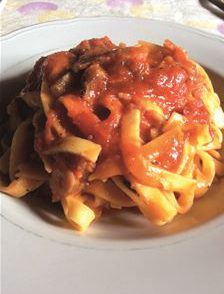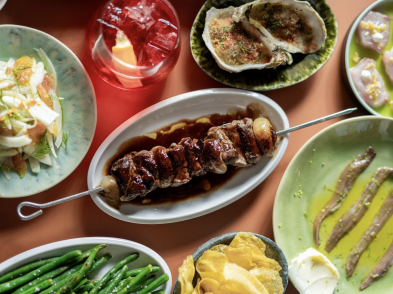The hills are green, the trees are budding and the days are getting longer. Spring, to me, means recipes based on tender, young spinach leaves mixed with fresh sheep’s milk ricotta.

There are several Tuscan dishes that I adore, such as ravioli gnudi, “naked” ravioli, which are more like spinach and ricotta gnocchi, lightly poached and served with sage, butter and Parmesan. Another classic is the crespelle alla Fiorentina, crepes filled with the same spinach and ricotta filling, but topped with a light Béchamel sauce, perhaps a little tomato sauce and baked in the oven. They are easy to prepare and serve at the last minute.
Did you know that everything is called “Florentine” style when it has spinach in it? Except in Florence! When Catherine de’ Medici moved to France for her marriage to Henry II, she apparently took her Florentine staff with her, using a lot of spinach, chard and other greens in everything they cooked. The French codified the recipes, giving them names that have become common all over the world. In Florence, it usually means you will have peas in the dish!
For Easter, every region in Italy has special dishes they like to make. Some are savory and some are sweet. I have chosen to make a savory tart from Liguria, called Torta Pasqualina. In the past, the recipe called for a simple flour and water dough as the crust for a chard and fresh cheese filling, where raw eggs were put in the tart, then covered with pastry and baked. It is lovely for a picnic, an Easter Monday tradition.

This year instead of making the traditional 33 layers of dough, which represent the years of Christ, I bought phyllo dough at the grocery store. Modern recipes also show it made with puff pastry.
For just two people, I made the chard and ricotta filling using 400 grams of cooked chard and 250 of ricotta. Precook the chard, then drain and chop. Sauté half an onion with olive oil in a pan, add the chard and season with salt to taste. Set aside to cool. Add the ricotta and stir to mix in evenly. Drain off any extra liquid from the ricotta if it has lots of liquid. Stir in an egg and half a cup of grated Parmesan and some chopped marjoram or thyme.
Grease a cake pan with olive oil and began layering the one dough sheet at a time. Lightly oil and spread with a brush on each layer. Also brush the sides of the pan.
Make the chard and ricotta filling and spread in pan. Make small indentations large enough to hold an egg. Break the egg into the prepared holes and lightly season with salt and pepper. Sprinkle with grated Parmigiano Reggiano. Cover with the remaining layers of pastry, brushing with oil. Start to fold in the extra layers, which have been on the outside of the pan, brushing each fold lightly with olive oil. Bake at 350°F (180°C) for 45 minutes or until golden.
This Easter pie is usually served at room temperature. Reminiscent of a Greek spanakopita or other Mediterranean savory tarts, a lovely surprise is revealed when you cut it open.
The original recipe was published on Judy Witts Francini’s website.








